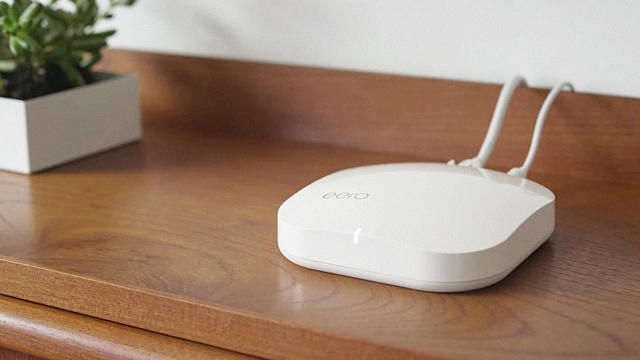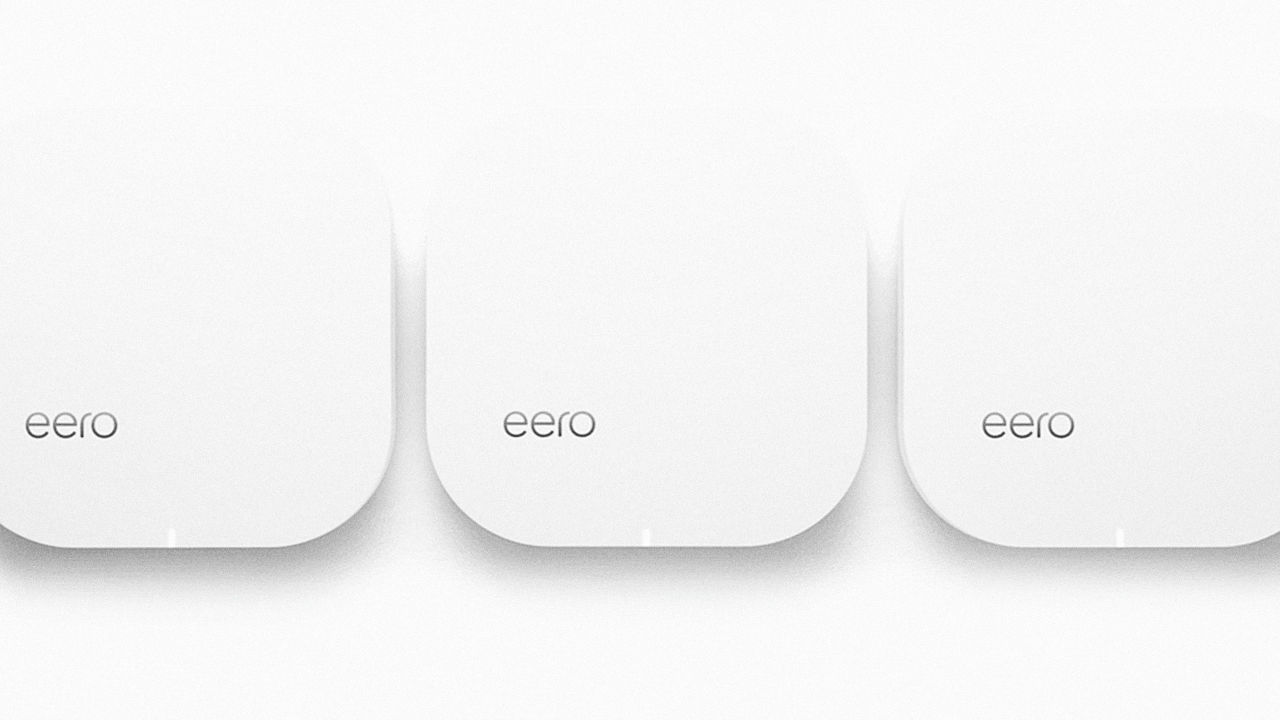review: Eero’s progressive Wi-Fi device Takes the hassle Out Of Networking, For a value
more than a year ago, a startup known as “Eero” introduced that it was reimagining Wi-Fi from the ground up to show you how to arrange and take care of, much less prone to efficiency issues, and even—from an industrial-design standpoint—fashionable. It began taking preorders for its gadget, which it mentioned can be out via the summer of 2015.
It mustn’t come as a shocker that reimagining Wi-Fi used to be an enormous undertaking. actually, it was once even huger than Eero expected: handiest now is it starting to ship its product to customers.
Now that it’s arrived, Eero isn’t for everyone. the cost is steep in comparison with more mundane Wi-Fi tools, and there’s a number of stuff that gearheads may care about that it doesn’t even attempt to do. but judging from my time with a pre-liberate model, Eero took the time beyond regulation to guarantee that its product was polished, approachable, tough, and most often able to dwelling as much as its doable.
in brief, it appears like what Apple would possibly have provide you with if it had invested really extensive energy into rethinking Wi-Fi. Which may well be a weird strategy to put it on condition that Apple does promote Wi-Fi routers. on the other hand, Eero feels more ambitiously Apple-esque than Apple’s own Airport tools does.
Eero isn’t the primary try to restoration what ails Wi-Fi, and it has certain issues in widespread with one of the most others. An Eero is a diminutive, low-profile white field without any external antennas; chances are you’ll mistake it for a Roku- or Apple tv-fashion video-streaming field. it is designed to mix unobtrusively into its setting; the top is even a tad vivid so it displays a few of its environment. As with Google’s OnHub, the choice to make Eero appear just right wasn’t purely aesthetic; you can be more prone to stick it out within the open—where its sign is much less likely to be obstructed—if it is eye-catching to the eye.
however Eero goes manner past OnHub by means of offering not just a Wi-Fi router, but a Wi-Fi gadget. the first Eero you set up, which you plug into your modem, serves as a twin-channel 802.11ac Wi-Fi router. Plug in a single, two, or more extra Eeros in different areas of your own home, they usually type a mesh community, spreading Wi-Fi round your own home so that wi-fi gadgets reminiscent of laptops, phones, tablets, and tv containers can get signal from a nearby Eero moderately than through seeking to connect a router that could be in room on another floor.
This approach entails more than one Eeros. When the company commenced taking preorders a year ago, it was once at $one hundred twenty five a field, or $300 for a three-p.c.. Now it is asking $200 for a single Eero, or $500 for 3. that is more than most people spend money on Wi-Fi infrastructure for his or her properties. however, if you happen to tried to handle coverage issues by buying a high-end standard router and supplementing it with one thing like network extenders or HomePlug power-line networking tools, chances are you’ll run up a total invoice in the identical ballpark. And Eero targets to offer an all-in-one method to get rid of dead spots and different community gremlins, without requiring customers to bring together a couple of items and figure out how to integrate them.

how it All Works
putting in a Wi-Fi community frequently isn’t an experience i might mistake for fun. however the whole thing about Eero presentations that its designers labored hard to make the method quality in a method which is uncommon for the class.
for instance, every Eero has two ethernet ports, and it isn’t important which one you connect to your broadband modem: The box is wise enough to figure it out. you should utilize the additional jack for something located nearby, like a networked hard drive or pc pc, or can plug it right into a ethernet network if your own home occurs to be suitably wired.
Even the facility brick is an efficient-looking customized job slightly than the homely, normal brick that is otherwise same old equipment within the networking world. it can be more or less surprising to look a Wi-Fi firm sweat a element like that.

As with Google’s OnHub, you put up Eero using a smartphone app. The app talks to the community containers by the use of Bluetooth LE to bootstrap them onto the community, and connects to a cloud-based totally provider that manages your community. It also offers some advice about how to situate multiple Eeros: Ideally, you must place them inside forty toes of each other, with a transparent line of sight. depending on your own home’s layout and where you’ve gotten power retailers, it’s possible you’ll or may now not be capable of reach that. (In my case, I was once in a position to meet the forty-foot purpose, however with walls in the way in which).
putting in place the first Eero box—rather than my 802.11ac Linksys router—took me only some minutes. adding two others, in the lounge and a bed room, took hardly any time in any respect. I simply selected a spot for each one, plugged it in, then delivered it to my setup via the Eero app. the whole thing labored without the additional fiddling i believed can be required.
A disclaimer: except anyone does methodical testing of Wi-Fi in a maniacally managed atmosphere, any data about efficiency is anecdotal within the excessive. And as a substitute of being methodical, my spouse and that i persisted using the web the best way we on a regular basis do. We streamed video to plenty of devices, uploaded and downloaded recordsdata, and frolicked on the net performing an assortment of tasks.
With that proviso out of the way in which, we in an instant observed that the community was snappier and less prone to evident hiccups. SpeedTest.web said speeds of 80-Mbps to 90-Mbps—notably better than I’ve gotten with other routers up to now. basically, I felt like I was once getting more of the bandwidth that we already pay for—no troubleshooting required. And i began to wonder if one of the crucial flakiness that i might instinctively blamed on Comcast might truly have stemmed from Wi-Fi protection issues.
the fee Of Simplicity
Eero strips out the entire complexity of configuring garden-selection routers, however in a way that, again, feels Apple-like—in that it does so partially by using not doing all that a lot. The smartphone app has a nifty characteristic that allows you to share a password with guests so they are able to use your community. however there are no parental controls; no choices for tweaking safety; no settings for folks who prefer to optimize their community for particular functions.

Eero containers are capable of auto-updating themselves via the cloud-based carrier, and Nick Weaver, the corporate’s CEO, told me that the plan is for them to “preserve getting better and higher virtually every day.” For now, though, this method is for people who find themselves okay with a “set it and disregard it” approach to networking.
Some other people might also in finding Eero bins skimpy on the subject of ethernet ports for add-on units. (when you really want more ports, you can plug a network switch into the Eero box.) And i feel the fact that the machine relies on a cloud-primarily based carrier managed by a startup will give some potential consumers pause, even though I was once less thinking about privateness and safety implications than by means of visions of the Eero hardware changing into a doorstop within the experience that the corporate ever runs into hassle and isn’t round to supply its provider.
still, what Eero sets out to do, it accomplishes with a lot of panache. If the cost does not send you into decal shock and your current Wi-Fi is anything else lower than rock strong, it can be well value taking into account. No, it would not cater to the needs of Wi-Fi nerds. but the very best thing in regards to the system is that it deals higher Wi-Fi for people who haven’t any desire to engage in Wi-Fi nerdery within the first position.
(18)














